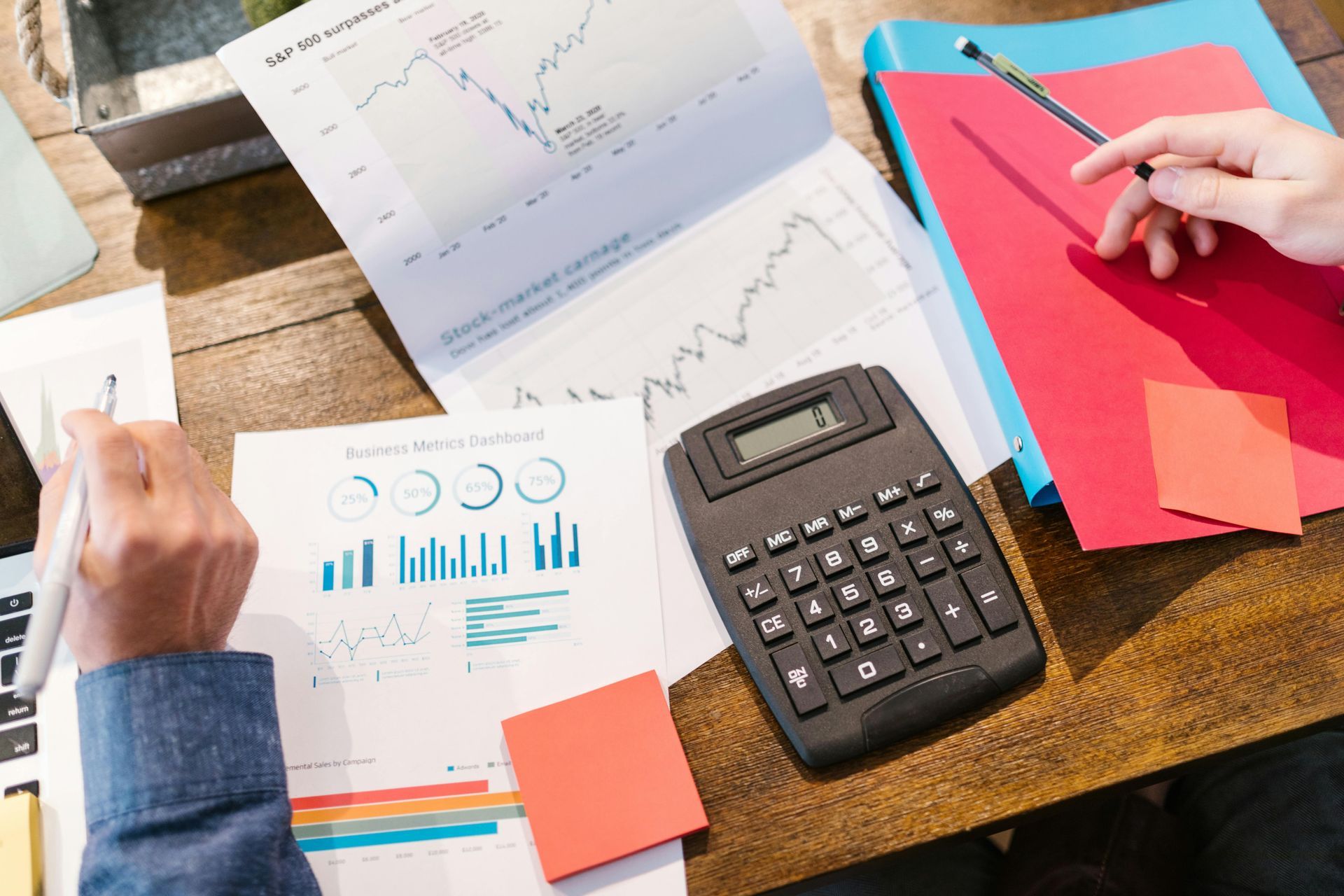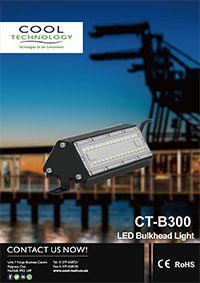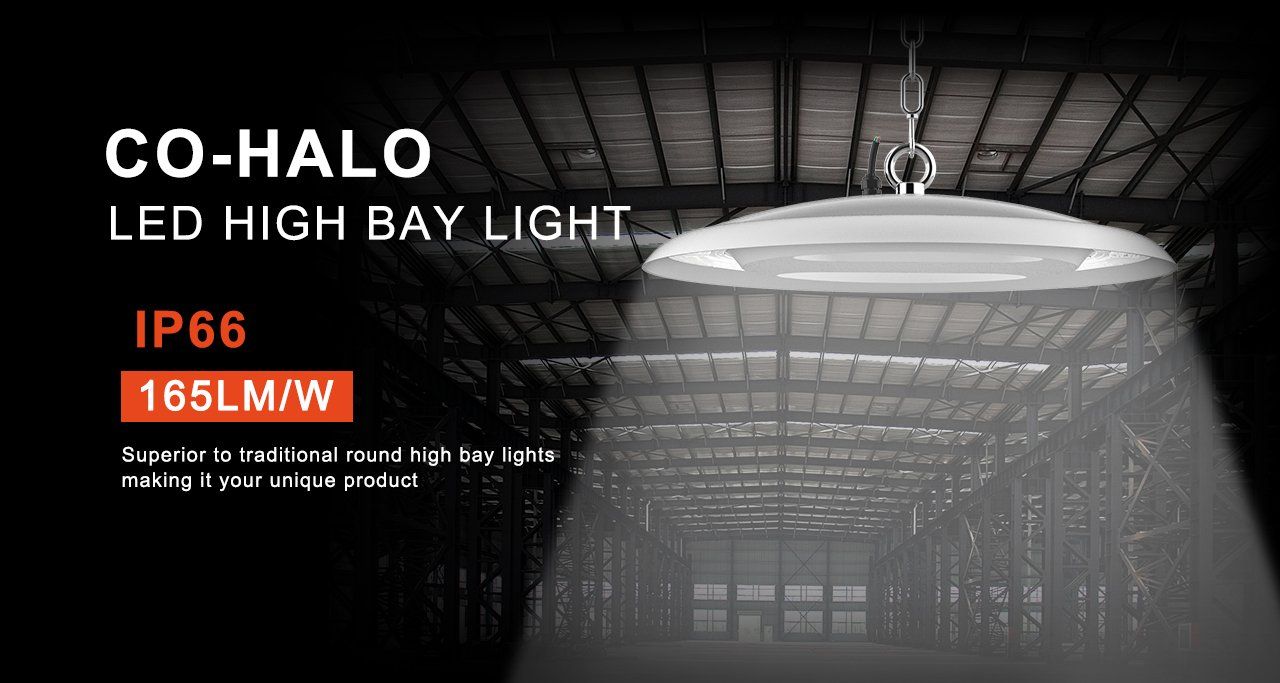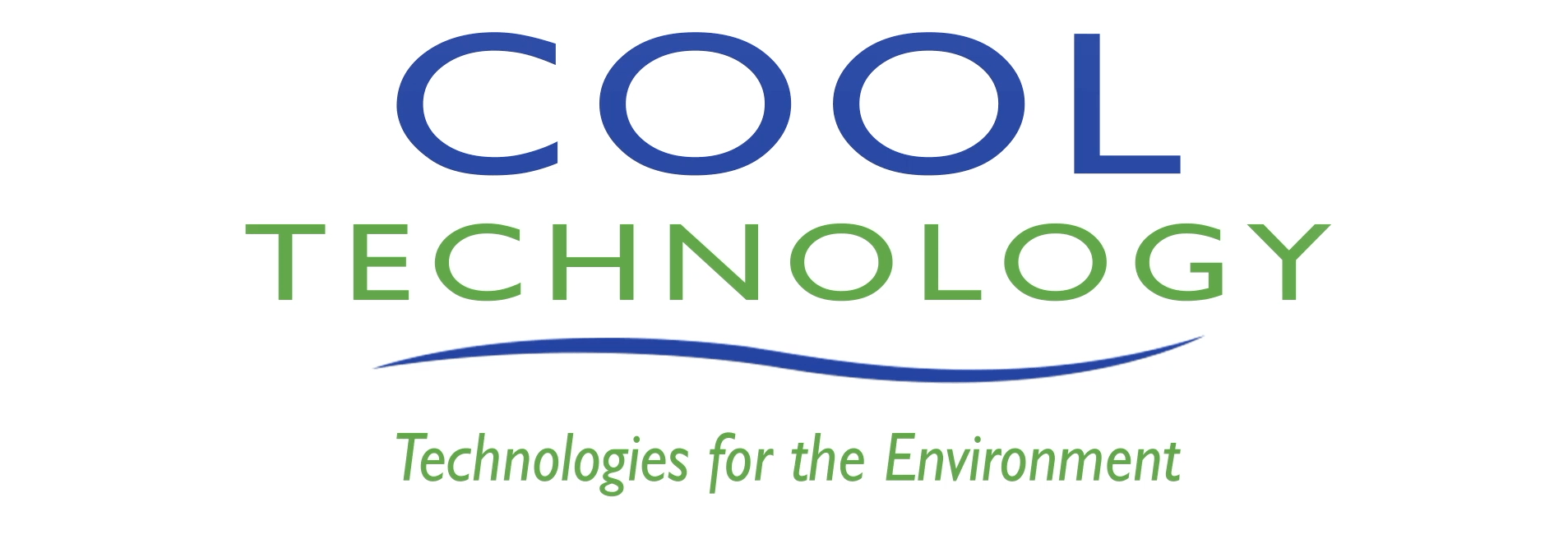Welcome to the Cool-Tech Blog
In our blog, we will have regular updates on all Cool-Tech Ltd news, projects and services we’ve been working on throughout the year

As the UK Health Security Agency (UKHSA) reports, over 1300 people died from excess heat in England through 2024 . The number is higher than anyone expected because 2024 was cooler than previous years, with nothing more serious than yellow alerts in England. The think tank Green Alliance responded to the news, saying England's towns and cities remain 'unprepared for rising extreme temperatures'. They're calling on the government to do more to address the health issues caused by heatwaves. So what's going on, and what can businesses do to keep things cool? Summer 2024 – Not so hot but unusually deadly The UKHSA says there were 1311 heat-related deaths in England through four distinct episodes of heat in summer last year, 282 more than they'd usually expect based on the temperatures seen and the nation's usual 'temperature-mortality relationship'. The UKHSA system identifies, categorises and shares information when extreme temperatures are likely to affect our health. A yellow alert is sent out when the temperature is OK for most of us but could impact the vulnerable. Amber alerts cover heatwaves in at least one region that could affect all of us, and also kick in when the mean Central England Temperature hits at least 20C. A rare red alert reveals a significant risk to life for everyone, human and otherwise. Four chunks of hot weather in England totalling 14 days met the yellow warning definition through 2024, the fourth lowest since records began in 2016. But while it was relatively cool compared to the hottest years seen recently, three of the four heatwaves led to an unusually high number of deaths. The numbers include 467 heat-associated deaths in the second heatwave, between 18th and 20th July. As usual the elderly were at most risk, with 521 deaths per million 85 year-olds and older, followed by 111 per million people aged 75 to 84. The Green Alliance says it's vital to focus on protecting people who are the worst affected by these extreme heat episodes, the old and vulnerable. And they say action has to be taken right now to “tackle the rising health risks of heatwaves.” Friends of the Earth agrees, saying the numbers provide “tragic evidence of the lethal impacts of climate breakdown”. They say the government’s climate plan, currently on the way, will act as a “litmus test” to show exactly how serious it is about preventing heat related deaths as well as fatalities caused by other extreme weather events like floods and high winds. As for the future, the Green Alliance's Dr Agostinho Sousa says that these heatwaves are likely to become more intense, last longer and happen more often as the climate warms, which means a co-ordinated health response is essential. What about heatwaves in Europe? Obviously we're not the only ones. Climate change doesn't respect borders, politics or cultures. While we might be an island and Brexit might separate us, the weather doesn't care about that. We'll feel the effects as well. So what about other countries across Europe? As revealed by the UN-led European State of the Climate 2024 report , 2024 was the warmest on record for the entire continent. Europe also qualifies as the fastest-warming continent on earth, with more extreme weather and record temperatures making 2024 the warmest on record. The scientists saw a 'striking' east-west contrast in Europe's climate, extremely dry and warm in the east but warm and wet in the west. And while they discovered Europe also has an unusually high risk of floods in future, it is also due to get hotter. A 1.5 degree rise in average global temperature compared to pre-industrial revolution levels could see the extra heat killing 30,000 more Europeans a year. How to keep cool? You need evaporative cooling! You need to keep people cool at work. Some machinery, products, drugs, animals, foods, production lines and ingredients also demand a cool setting. But you don't want to be faced with the high cost of buying and fitting traditional air conditioning – itself a climate killer - or the vast electricity bills it generates. Luckily evaporative cooling comes to the rescue, an ancient and fiendishly efficient way to cool the air naturally using minimal power. Ask us about evaporative cooling for your premises. You'll be surprised how affordable and comparatively simple it is to fit, retro-fit, run and maintain, and you'll love the comfortable, cool feeling.

Industrial cooling systems are vital for the comfort of employees, for productivity, and often for the products being produced inside the building, for example in the food and pharma sectors. So when your goal is to keep things under 25C whatever happens outdoors, how does expensive traditional refrigeration-based air conditioning stack up next to 'natural ventilation', mechanical ventilation via energy-efficient EC fans, and evaporative cooling? About natural ventilation Natural ventilation, of course, is the cheapest of all because it simply involves is opening windows, vents and doors to create a draught. Because hot air rises, the airflow lets hot air escape, replaced by cooler air from outdoors. This is great for factories and enormous buildings like hangars, with no running costs and no equipment required. But when it's hotter outside than it is indoors, like it often is these days thanks to increasingly frequent and extreme heatwaves, and there isn't even a breeze, things quickly fall apart. About ducted cooling 'Ducted cooling' simply describes the way a cooling system is installed: a central unit and a network of air ducts to send the cooled air around the building. You'll usually find the main unit either hidden in the roof or outside the building, and you'll be able to see the vents inside. Ducted cooling pulls warm air through a unit with a fan then sends it through a cold evaporator coil made of refrigerant pipes where it cools right down. The cooled air is recirculated via ducts, bringing down the temperature and humidity when it mixes with the existing warm air. This means doors and windows must be closed all the time otherwise the cool air escapes, warm air pours in, and the system has to work ever-harder – and more expensively - to cool things back down again. Refrigerants like the hydrochlorofluorocarbons or HCFCs used in ducted cooling damage the climate, contributing to climate change. The world started phasing them out in 2018, and by 2030 all bulk imports of the chemicals will be banned. Modern cooling systems still use Hydrofluoroolefins – AKA HFOs – and there are also some clever natural refrigerants being used in modern duct cooling systems. Having said that, it's important to know evaporative cooling still beats duct cooling on the CO2 front. About Mechanical Ventilation with EC fans Businesses use EC fan-driven mechanical ventilation instead of AC for a low cost, reliable cooling solution. Mechanical Ventilation with EC fans delivers efficient controlled cooling. EC stands for Electronically Commutated, and these fans are a cost-effective way to improve airflow at low cost, being so efficient. An EC fan uses as much as 70% less electricity as a traditional old-school Air Conditioning fan, controllable thanks to variable speeds. You get a consistent flow of air whatever the temperature is outdoors and it also helps get rid of heat, beats humidity, and strips contaminants from the air. About evaporative cooling Evaporative cooling pulls warm air through a vent, then a simple fan driven by a motor sends it through wet filter pads kept damp by a water pump. When the water naturally evaporates it carries the heat it uses to evaporate away, leaving you with a comfortable, cool vapour. This is sent wherever it is needed via an internal fan and pump, then out through the ducts or out via the cooler unit itself. You're free to leave the doors and windows open because evaporative cooling doesn't recirculate old air, it continually uses fresh air. When you combine an evaporative cooling solution with a balanced ventilation system you harness water to cool and introduce fresh indoor air into big area. It's so much more environmentally friendly than ducted cooling, which relies on powerful refrigerant chemicals. It doesn't just cool the air, it exhausts the dirty air and therefore improves your air quality at the same time. One of the biggest advantages of evaporative cooling is the super-low cost. It is dramatically more cost-effective. Because it has fewer moving parts it takes less electricity to run. Fewer parts also means less maintenance and simpler maintenance. There's only a tiny risk of breakdowns. Most of the time all you need to do is change the water pads and clean the system, both affordable and easy. The experts say evaporative cooling running costs are just 10% of the cost to run refrigerant air conditioning. The capital spend is also impressive at 50% less, half the cost. Evaporative cooling is even brilliant when you only need to 'spot cool' one or more specific areas, not the whole place. Perfect for consistent cooling and temperature control, it integrates easily into a mechanical ventilation system. It's 90% cheaper than air con, keeps factories below 25°C all year round, provides 100% filtered fresh air, stops CO₂ building up, and improves air quality in an eco-friendly way using only water and fans. Better still you can install it gradually in phases to slash the already-low initial capital expenditure. Because every factory is different, you'll need a cooling expert to recommend the best combination of systems and methods based on your exact needs. We carry out all the maintenance for EcoCooling , the UK's biggest manufacturer and distributor of fresh air direct evaporative coolers with more than 3,500 EcoCooler installations worldwide. Why not give us a call, see what evaporative cooling can do for you?

UK weather records were broken time and time again through 2024, leading experts to believe that we're already outside the usual 'envelope of historical weather observations'. Because climate change brings less predictable conditions, we can't expect winter to stay reliably cold or summer to remain mostly warm. Anything goes at this stage, which means wise businesses operating in cool conditions need to factor the uncertainties in. It looks like efficient, cost-effective cooling is going to be more important than ever, even in winter. Here's a run-down of the UK's weather patterns for 2024, plus some concerning predictions for 2025. What the weather did in 2024 2024 was probably the UK's fourth warmest year on record, the warmest since 1884 with a mean temperature of 9.78C, 0.64C more than the 1991-2020. All of the top 10 warmest years have happened since the Millennium, five of them since 2015, and as a whole every year in the past decade has proved warmer than 1991-2020. 2024's minimum temperatures fell well above average, with particularly mild nights and far fewer frosts than usual. Eight months featured temperatures that soared above the 1991-2020 average, giving us the warmest May, second warmest February and fifth warmest December on record. In late January 2024 Sutherland in Scotland recorded temperatures of 19.9°C, a UK record for January. And since 2011 six months in every year have hit all-time UK maximum temperature records. In August 2024 we hit 34.8C in Cambridge and London saw temperatures edge over 32C on several occasions. Parts of Kent, Lincolnshire, Essex and Surrey reached a dangerous 33C. The UK’s top 10 warmest Februarys on record took place in 2019, 2022, 2023 and 2024, a clear trend for warmer winters to come. May 2024 broke records with a sustained average mean temperature of 13.1°C across the UK, breaking 2008's record 12.1°C and causing shock and surprise amongst climate experts. It was partly down to the persistent marine heatwave surrounding the UK from spring to June 2024, which had a dramatic impact on land temperatures, particularly at night. In 2024 temperatures exceeded 1.5% above pre-industrial levels for the first time . In 2023 we hit 1.45°C above pre-industrial levels, the previous warmest year on record. This makes 2024 the twelfth year in a row with temperatures at least 1.0°C above pre-industrial temperatures. What does all this mean for 2025? The Met Office says 2025 may well be one of the three warmest years as far as global average temperatures go, following the 2023-2024 trend. This is mostly down to greenhouse gases, but temperatures in 2023-24 were also affected by the natural variations brought by El Niño, which warms the world's atmosphere. Even taking that into account, things are not looking good. The average global temperature for 2025 is predicted to fall somewhere between 1.29°C and 1.53°C above the 1850-1900 pre-industrial average. And that's important for temperature-sensitive sectors for which temperature control and monitoring are essential. An article on the Science Direct website talks about a study into how extreme temperatures affect business profitability. They examined the effect of temperature extremes on the profitability of companies in 59 different sectors and found that the extremes we're seeing more frequently affect the earnings of more than 40% of them, including leisure products , textiles, clothing, luxury goods, hotels and restaurants, drinks, retail, aerospace and defence, airlines, construction and engineering, machinery, utilities and healthcare and pharma to name a few. Staying cool whatever the weather throws at your business Our evaporative cooling tech handles temperature extremes really well, much cheaper and more effective than ordinary air conditioning. It improves costs, protects the environment, and can be installed or retro-fitted to schools and universities, warehouses, offices, gyms and all manner of industrial units. In a world where being prepared is more important than ever going forwards, evaporative cooling helps to future-proof an enormous range of businesses across multiple sectors. If that sounds good, let's talk.

Take a tour of LinkedIn and you'll notice businesses in every country, of every size, shape and flavour, making efforts to go CO2 neutral. It's inspiring. Here are some tips to help your business do the decent thing in 2025, joining millions of others who are taking the fight to slow climate change into their own hands. First, what does going net zero mean? You can go CO2 neutral as an individual, business, or even a country, and almost every country on earth now has a plan. You're carbon neutral when you balance the CO2 you release perfectly with the amount you absorb or remove. Basically, when you have net zero carbon emissions overall, you're not adding any CO2 to the atmosphere. You've effectively cancelled it out. The definition of net zero sometimes covers other gases, some of which are even more damaging to the climate than CO2. The biggest bad boys of all include methane, nitrous oxide, and hydrofluorocarbons. Together these other gases contribute about a quarter of global greenhouse emissions, with CO2 itself responsible for the other 76%. Net zero is vital for reaching the Paris Agreement goal of a maximum of 2°C above pre-industrial levels, ideally 1.5°C, although many scientists say we've already missed the lower target. The UK has pledged to go totally CO2 neutral by the year 2050, slashing emissions 78% by 2035 using 1990 as the base level. But many climate scientists think we must act faster. Two ways to achieve net zero You can reduce your emissions, remove CO2 from the atmosphere, or do both by: Actively taking in the gas Emitting less in the first place Harnessing existing natural ways to remove it, for example planting trees The UK's overall plan involves increasing energy efficiency, using more renewable energy to generate electricity for heat and transport, and ultimately replacing fossil fuels with clean, abundant hydrogen whose only by-product is water. Know where you stand So what is your business emitting right now? You'll need to know where you stand before you can make a plan. Luckily there's plenty of online support available from experts to help you do exactly that. Measuring your carbon footprint provides the baseline you need. You can pin down your current situation at Greenly, Positive Planet, and any number of other websites designed to help you measure, report, and reduce business carbon emissions. Use their CO2 footprint calculators and other software to input data and estimate your emissions based on: The energy sources used The methods and distances involved in transporting products Your waste disposal methods Then make a CO2 neutral plan The Carbon Trust website is packed with useful information about carbon footprinting for business. You can download their free introductory guide, which can form the framework for your plan. The British Chambers of Commerce website offers lots of insightful tips, including ten relatively simple things you can do right now to kick off your company's CO2 neutral journey. Brilliant low-cost products to slash commercial energy bills We offer three reliable, simple, and highly effective ways to cut CO2 emissions: LED lighting units : Designed for a wide variety of commercial uses, from roadworks to production lines. Being LED, they use a fraction of the electricity of regular lighting, leading to immediate savings. Evaporative cooling units : These use only a fraction of the energy needed for traditional air conditioning. It's an ancient cooling method that keeps large spaces, like retail premises, wonderfully cool. It's also ideal for livestock cooling, food production, and more. Smart heating products : Our efficient, ultra-controllable heating products save energy by design, making it easier to reduce consumption without compromising on comfort. Talk to us about slashing your CO2 emissions We're always happy to help. Give us a call about your CO2 neutrality ambitions, and we'll see what we can do to help you hit the mark.

The Met Office outlook for 2025 predicts we're facing one of the three warmest years ever recorded as far as the world's average temperature goes. 2023 broke records at 1.45°C above the all-important 1.5C over pre-industrial levels, and 2024 almost certainly went over the 1.5°C limit for the first time, a record nobody wanted to see beaten. And we all need to do our bit. In 2024 Labour said it wants to make electricity 100% clean by 2030. The Labour government's Great British Energy initiative involves creating a UK-owned energy company to invest in next-generation renewables, reducing the country's CO2 emissions as well as cutting the cost of energy. Jürgen Maier, dedicated to clean tech and the former UK CEO of Siemens, will lead GBE with initial funding of £8.3 billion. It's also good to know there's almost £5 billion of funding available to help businesses in the UK go greener. These green energy grants for business can be used in a variety of ways from installing LED lighting, solar PV systems and insulation to fitting more efficient heating systems. There's the RLS or Recovery Loan Scheme, the IETF or Industrial Energy Transformation Fund, Business Rates Support for Green Technology, the SEG or Smart Export Guarantee, plus Local Council Grants for Energy Efficiency and more. All of which might be able to help your company go greener, save money on energy, and even generate money from being greener. Let's take a look. Funding to go greener – Government, councils and more OFGEM suggests some handy business energy efficiency grants and schemes. The National Energy Foundation's YouGen website is full of excellent advice about efficient energy use and renewable energy sources. The Energy Savings Trust contains useful case studies to inspire you, also looking into energy efficiency resources. They hold events to talk about their recommendations and provide advice about energy efficient supply chains, so you may want to keep your eyes open for an event near you. And the smallbusiness.co.uk website provides great advice for everyone from SMEs and MSMEs to start-ups. Various government business energy schemes, loans, grants and subsidisation can help smaller businesses cut their impact with energy efficiency, revised processes, investing in green equipment, managing waste better, and planning ongoing sustainable development. Your local council might prove an excellent source of advice and funding, as do various kinds of independent green energy-focused business innovation funds. With luck and a fair wind behind you, you may be able to use the Smart Export Guarantee scheme to earn money from generating your own renewable power. You can check GOV.UK’s Energy Technology List for insight into the greenest plant equipment, delving deep into the latest and most efficient boilers, lighting, air conditioning and refrigeration tech. And there are plenty of different finance schemes provided by charities, specialist energy agencies and energy suppliers themselves. The Clean Heat Grant, for example, provides funds for businesses to adopt green heating tech like heat pumps and biomass, and the Green Gas Support Scheme funds biomethane to boost green gas use in the national grid. Your own business energy supplier might have schemes you can tap into. And price comparison website Compare the Market compares business energy quotes from a range of suppliers to help businesses spend less on the energy they use. Cut your usage, cut the cost and you can make substantial savings as well as helping battle runaway climate change. Combine all this potential support with contemporary low-energy, high efficiency heating, cooling and lighting technologies and there's significant potential for your business to hit its own emissions targets and contribute to the nation achieving Net Zero. Green energy delivers a competitive advantage Consumers are well aware of the issues around CO2 and climate change, which means going as green as you can – and talking about it – can provide an important competitive edge, in the same way that businesses with a strong and positive focus on Environment and Social Governance are beginning to attract savvy customers and consumers. Creating a business-beneficial virtuous circle Add all this together and you get a virtuous circle that can only benefit your business's future. So can we help you with the latest, greatest low energy heating, cooling and lighting? We're always happy to talk turkey with businesses wanting to reduce their CO2 footprint or aim for CO2 neutrality. Together, we can make it happen!

It's that time of year again, when we round up the last twelve months and begin to look forward to the new year ahead. So what stands out from 2024 in our world, and what's on the horizon? LED lighting is becoming the norm According to AMA Research , by 2028 the overall UK lighting market will be worth around £2.3 billion, an annual Compound Growth Rate of 2.8% compared to the estimated market size this year. Apparently lighting currently accounts for an estimated 12% of annual UK electricity consumption. Thanks to the widespread use of LED light and the smart connected systems they help enable, that might drop 'significantly' to around 8%, driving big energy savings and lowering the nation's CO2 emissions. The construction industry is an important driver for lighting products because they build new buildings and retrofit existing buildings. LED lighting is estimated to account for 72% of all UK lighting products and systems bought through 2024. Government legislation around greener, cleaner energy and lower emissions is forecast to increase the number to around 85% by the year 2030. In the meantime it looks like demand for LED lighting will keep on growing and will also become even more competitive as more manufacturers join the LED revolution, the tech matures and performance carries on improving. LED lighting products will become more affordable for domestic, commercial and industrial settings, and the market will carry on evolving. We can help you stay cool, create the light levels you need, and save money on electricity with our brilliant LED lighting units, with a variety of excellent-value LED lighting models designed for specific circumstances. Smart electric heating is making an impact Checkatrade says electric heating systems are growing in popularity with UK homeowners. Again it's no surprise thanks to the shocking rise in energy prices the country has been suffering for some years and the clear need to emit less greenhouse gases at home and at work. Increasing solar panel adoption is also helping drive greater take-up of electric heating systems since solar tech provides the energy to run today's clean, greener all-electric heating. If you'd like to take advantage of an incredibly controllable heating system so efficient you'll immediately notice the effect on your bills and comfort levels, we'll be delighted to discuss the many exciting, stylish options with you, whether it's for business or your home. The word about evaporative cooling spreads Funds Magazine says evaporative cooling is enjoying a boom because of the fast-growing, fast-developing trend for smart homes and smart commercial buildings, a major driver for the smart cooling system market. Domestic, commercial and industrial settings are increasingly adopting smart cooling solutions, which themselves are being designed to integrate with other smart devices and systems to deliver even more efficient energy management. Because the world's governments are busy bringing in suites of new regulations and incentives to create better energy efficiency and slash greenhouse gas emissions, the adoption of smart cooling systems is also set to increase over the foreseeable future. Inkwood Research predicts the UK's evaporative cooler market will grow 4.57% by 2032, currently seeing a surge because of booming demand for cost-effective cooling in a warming climate. The desire to be as sustainable as possible in business premises and at home is pushing demand higher for this efficient, economical cooling tech. These systems not only cool things down, they also improve air quality and slash the environmental impact of staying comfortable compared to traditional air conditioning units, which eat up large amounts of energy. In commercial settings evaporative cooling tech plays an increasingly important role in maintaining low-cost comfort in offices and shops, hotels, factories and every other setting where cutting down operational costs and reducing environmental impacts matters. Would you like to explore the fascinating subject of evaporative cooling for your premises? Again, we're always happy to pitch in with sensible expert advice without the hard sell. Here's to a fantastic new year to all of our current customers - and to those of you who'll be coming our way throughout 2025. Together we can make energy work harder.

Sometimes you need bright, clean light at an extra-wide angle to illuminate a particular area or context. Our ultra-wide angle CT-B300 LED bulkhead lights are an excellent solution. Here's what you need to know about this particularly well-designed, ruggedly made and thoroughly-tested bulkhead lighting. What are our LED bulkhead lights designed to do? The lights' ultra-wide angle illumination of 150 degrees provides a large area of bright, widely-scattered light. This LED lighting style is perfect for anything from the railway tunnels you find along ex-railway line walking trails to wine cellars and underground mining contexts, also popular for industrial applications and great for creating ambient lighting over facilities like conveyor belts. You can fit them to the ceiling, suspend them below the ceiling, or mount them on walls. CE and RoHS LED bulkhead lighting The lights carry the CE mark, which means the tech complies with high EU safety, health and environmental requirements. It proves the manufacturer has checked that the lights meet EU standards, indicates they comply with EU legislation, and allows the products to be sold to the European market. Having been carefully RoHS tested, they're also fully RoHS compliant. RoHS stands for 'Restriction of Hazardous Substances' also called Directive 2002/95/EC, an EU standard that restricts the use of ten hazardous materials in electrical and electronic products: cadmium, lead, mercury, Hexavalent Chromium, Polybrominated Biphenyls, Polybrominated Diphenyl Ethers, Bis(2-Ethylhexyl) phthalate, Benzyl butyl phthalate , Dibutyl phthalate and Diisobutyl phthalate. They're all very bad for the environment, pollute landfill sites, and are highly dangerous for people working in the places products containing them are made and recycled. IP66 and IK10 ratings make it a particularly tough customer. As IP66 rated lights, they've been tested and found to meet Ingress Protection level 6 for solids and liquids, delivering totally dust-free protection against solids and great protection against splashes, drips, high-pressure hoses and even temporary floods. In fact this is the highest standard of level of waterproof protection, suitable for outdoor use. The lights' IK10 rating means they come with the highest level of impact resistance for light fixtures. They can handle an impact of 20 joules, equivalent to a 5 kilo weight being dropped from a height of 40cm. A choice of two wattages Choose from 30w or 50w models, each with the same impressive spec: • Lamp luminous flux 150LM/W plus or minus 5% • CRI Ra>70 • CCT 2700 - 6500 • Rated Voltage AC 100-240V 227V~,50/60Hz • Power Factor >0.95 • Operating temperature: Minus forty degrees Centigrade to approximately 60C You can click here for an explanation of what these mean. (link to article from 4th Nov 'LED Floodlight T300A – Multi-purpose, rugged, brilliantly bright'). An even G5 light distribution curve Light distribution curves specify the direction and intensity of a light. A type G5 light fixture like this provides an even, circular light distribution that makes it perfect for large, open areas where you need uniform illumination. Testing, testing, 123! The units have been expertly tested to prove their worth. Salt Spray Testing proves the lights come with very good resistance to corrosion. They've passed the High-Low Temperature Test at extreme temperatures of <-40°C to >60°C, and UV ageing testing for discolouration found no impact on performance over an impressive 720 hours or so. A Vibration Test proved the lamps' system is robust, and Withstand Voltage Testing showed the lamps handle the voltages they're designed for while avoiding surges and short circuiting, ideal for safety. All this at an impressively low running cost Because LEDs use so little electricity, these lights cost very little to run compared to non-LED alternatives. They run cool too, not heating up like ordinary bulbs. Would you like to talk things through with an expert? We can talk LED lights all day long. Feel free to get in touch to discuss the potential or get answers to your questions. PS. We'd like to wish our customers a happy, peaceful Christmas and a profitable 2025.

In this article about specialist LED lighting, we take a deep-dive into our popular Halo-F series of LED highbay food processing lights, which are also perfect for the pharmaceutical sector, wineries, supermarkets and many other dust-free plant settings. Why food processing and pharma settings need bright light Food-safe lighting is vital for every food related business, keeping products and employees safe as well as helping maintain high hygiene standards. Food, pharma and similar facilities often have very specific lighting constraints and demands, with lighting meeting demanding criteria and stringent standards, often in highly-controlled critical environments. If, as is more likely in a climate change world, temperatures change dramatically to reach new highs and lows, the lighting must be able to cope without affecting production or standards. It's good to know that the Halo-F series does all of this in an efficient, cool, low-energy way with LEDs at its heart. LED Food processing Light specification The Halo-F series comes with a choice of wattage to suit a huge variety of situations and contexts: 50W, 80W, 100W, 150W, 200W, plus the brightest of all, the super-bright 240W model. The driver comes from MEAN WELL, a highly respected supplier dedicated to standard power supply products. They have strong positive partnerships with around 250 authorised distributors globally and their excellent products are widely used in industrial control, medical and other situations. The light source is provided by LUMILEDS, makers of the great quality LUXEON LEDs used for a variety of applications and known for their high performance, reliability and flexibility. And the lamps' Luminous Flux, at 160LM/W±5%, gives you a really good perceived power of light. Your CRI or Colour Rendering Index is RA>70/80, which means you get an accurate representation of the real-life colour of the objects being lit. And with a CCT or Correlated Colour Temperature of 2700-6500K there's a wide spectrum of warm to cool light choices, from a cosy-feeling low level to illumination that's bright, white, and very like daylight. Your RATED VOLTAGE is AC 100-240 277V~,50/60HZ and the POWER FACTOR is >0.95. And there's even a choice of light distribution, with beam angles of 60°/90°/120°. Ideal for places where water and steam are a risk to equipment, the IP GRADE of IP69K means the units are both high pressure water resistant and steam resistant. Because they operate perfectly well within an enormous temperature range, from -40℃~55℃, they do what they're supposed to do however hot or cold the setting is or becomes. Because of the sensitivity of the sectors using lights like this, which tend to come with unusually strict requirements, these LED lamps are made using biocompatible materials for high levels of hygiene and safety. And there's even more choice around the way they're fitted. Choose from either a ceiling installation, which sits close to the ceiling, or suspension installation, which hangs below the ceiling to be placed at the exact height you require it. A strict LED food processing light testing regime A Salt Spray Test explores the heat sink processed by oxidization and powder spraying, revealing really good resistance to corrosion. A High-Low Temperature Test over two hours at a temperature of <-40°C saw the lamps working perfectly, and testing for four hours at a temperature of >60°C gave equally impressive results. A UV Ageing Test looked for discolouration over 720 hours or so and found no impact on the lamp's performance, with no effect on the lamp's appearance or the PC lens either. A Vibration Test simulated various vibration conditions and proved the lamps' system is good and robust. Withstand Voltage Testing showed the lamps handle the specified voltages while avoiding surges and short circuiting, dealing with potential operation errors and faults with ease. And Temperature Rise Testing proves the units are man enough to handle hikes in temperature that could cause breakdowns and accidents in lesser products. And last but not least, because LEDs use so little electricity they costs very little to run compared to regular lighting. Contact us for answers to your Halo-F series LED light questions You'll find the full details about the Halo-F range here . If you have any questions about any aspect of them, we'll be pleased to help.

